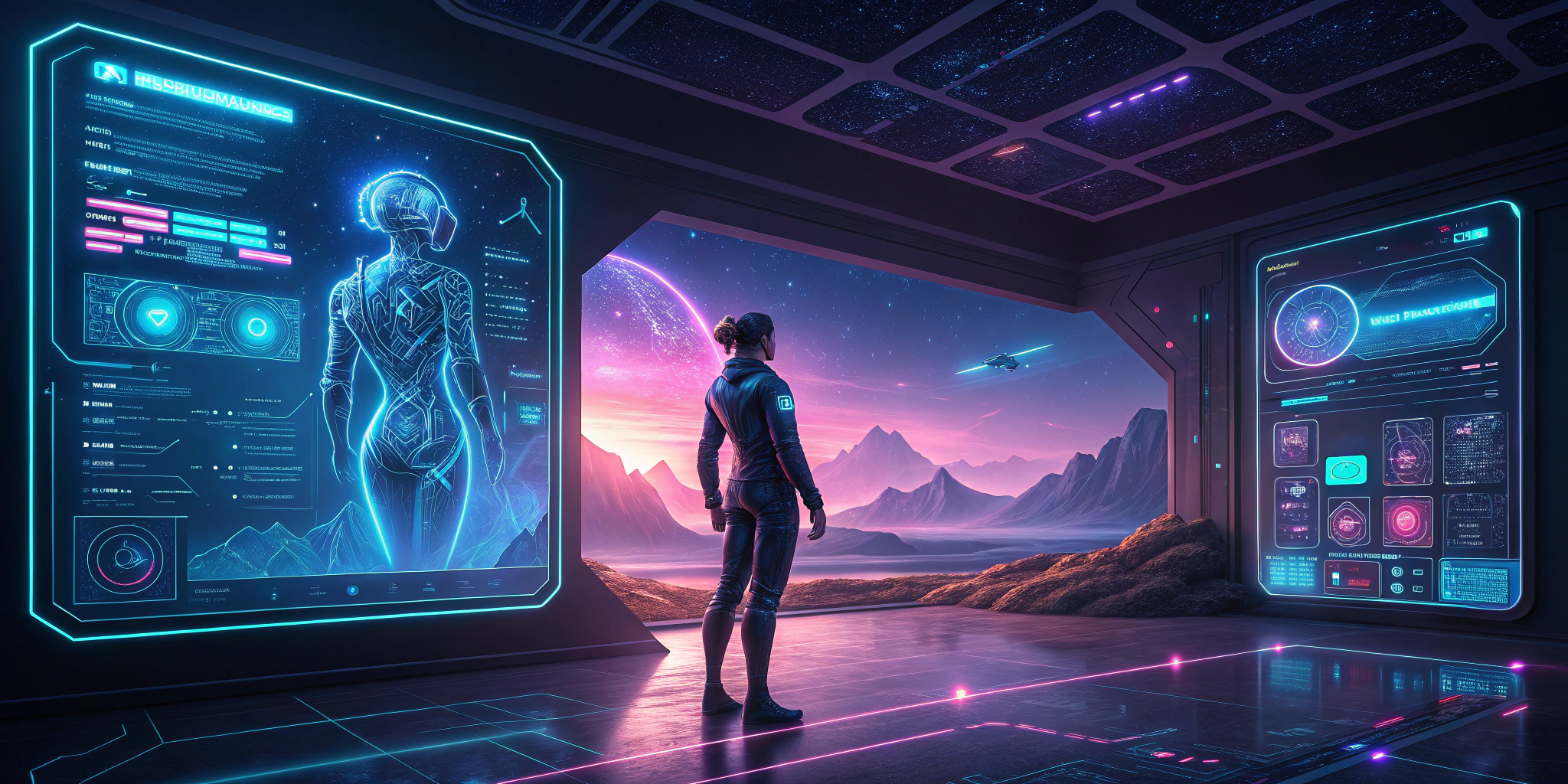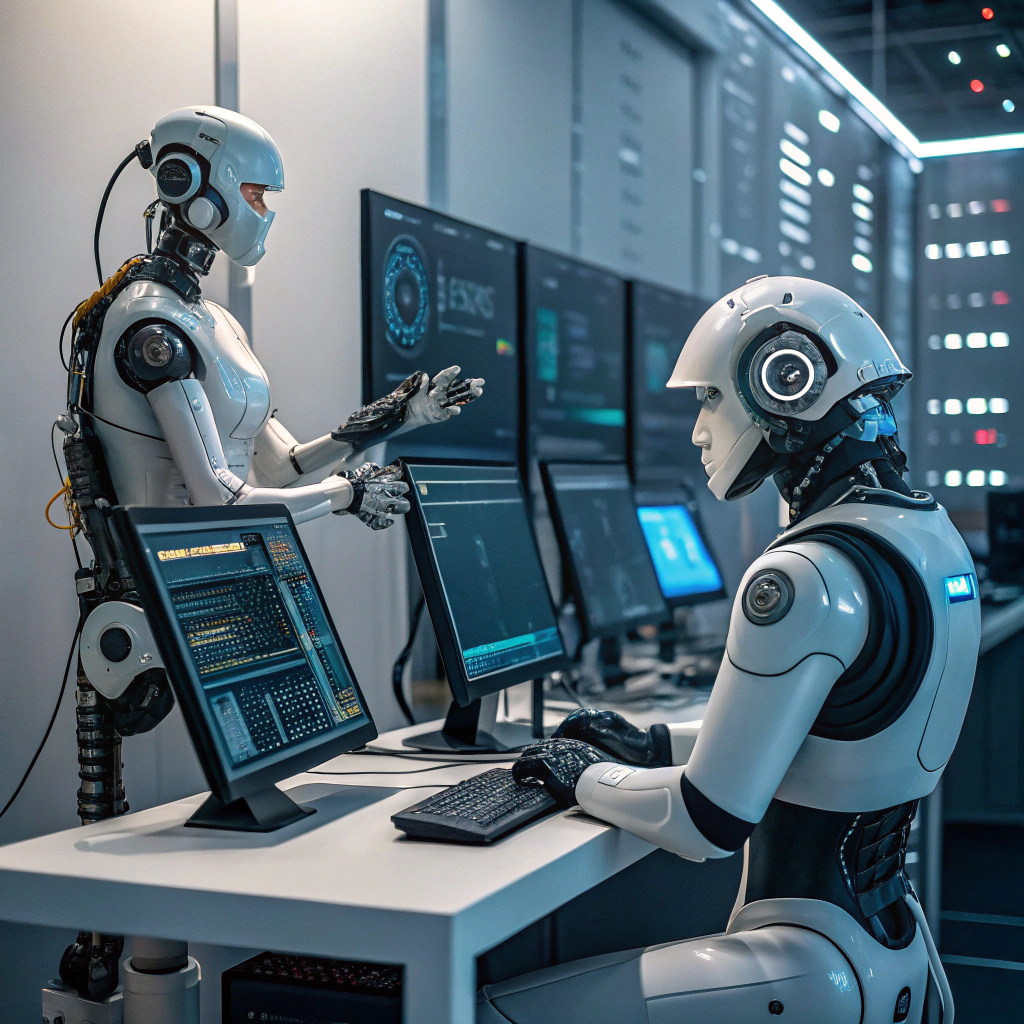Unlocking the Future: Exploring AI Agents, Intelligent Automation, Machine Learning, and Autonomous Systems

**Unlocking the Future: Exploring AI Agents, Intelligent Automation, Machine Learning, and Autonomous Systems**
The unprecedented rise of artificial intelligence (AI) has unequivocally reshaped the technology landscape, driving innovation across industries and becoming the cornerstone of modern applications. Concepts like AI agents, intelligent automation, machine learning, autonomous systems, and cutting-edge AI applications are central to this transformation. This article delves deep into these concepts and their impact, providing a comprehensive, SEO-friendly overview for readers keen to explore the evolving AI ecosystem.
---
### **What Are AI Agents?**
AI agents are entities designed to perform tasks autonomously while interacting with their environment to solve specific problems. These agents can perceive the world, reason about situations, and take action to achieve objectives without direct human intervention.
AI agents come in various forms, such as:
1. **Reactive Agents**: Operate based on the current state without considering past events.
2. **Deliberative Agents**: Use complex reasoning and planning models to achieve goals.
3. **Collaborative Agents**: Work alongside humans or other agents to complete tasks.
4. **Mobile Agents**: Navigate through systems or environments, collecting and processing data.
Applications of AI agents include customer service chatbots, personal assistants like Siri, Alexa, and Google Assistant, robotics, and cybersecurity systems designed to detect and mitigate threats.
---
### **Intelligent Automation: Redefining Operational Excellence**
Intelligent automation (IA) integrates AI capabilities like machine learning, natural language processing (NLP), and robotic process automation (RPA) to drive efficiency and reduce human intervention. Businesses are increasingly deploying IA to streamline workflows, eliminate repetitive tasks, and improve accuracy.
#### **Key Features of Intelligent Automation**
1. **Workflow Optimization**: Automates mundane processes, ensuring faster execution and consistency.
2. **Data Analytics**: Extracts and analyzes patterns using AI to make better predictions.
3. **Decision Automation**: Implements AI models to generate accurate decisions without human bias.
#### **Use Cases in Modern Industries**
- **Healthcare**: Automated patient scheduling and claims processing.
- **Finance**: Crime detection software, fraud prevention, and automated underwriting tools.
- **Retail**: Personalized customer experiences and inventory optimization.
- **Manufacturing**: Predictive maintenance and assembly line automation.
By coupling human creativity with intelligent automation tools, businesses are scaling up operations while maximizing efficiency and profitability.
---
### **Machine Learning: The Engine Driving AI Systems**
Machine learning (ML) is a subset of AI focused on empowering systems to learn from data patterns and improve over time without explicit programming. ML algorithms leverage statistical models to make predictions, classify data, and provide actionable insights.
#### **Types of Machine Learning**
1. **Supervised Learning**: Learns from labeled datasets to predict outcomes or classify data.
2. **Unsupervised Learning**: Analyzes unstructured data to detect patterns or clusters.
3. **Reinforcement Learning**: Employs reward systems to optimize decision-making in dynamic environments.
#### **Applications of Machine Learning**
- Image recognition systems powering facial authentication in smartphones.
- Recommendation engines used by Netflix, Amazon, and Spotify for personalized suggestions.
- Sentiment analysis tools employed in marketing to gauge customer opinions.
- Predictive analytics for weather forecasting, stock market trends, and healthcare diagnoses.
---
### **Autonomous Systems: The Rise of Self-Sufficiency in Technology**
Autonomous systems are intelligent systems designed to carry out tasks independently. Unlike semi-autonomous systems requiring human intervention, fully autonomous systems leverage AI technologies to make real-time decisions without external input.
#### **Characteristics of Autonomous Systems**
1. **Environment Awareness**: Use sensors, cameras, and other technologies to collect and analyze environmental data.
2. **Real-Time Decision-Making**: Process information instantaneously for adaptive responses.
3. **Self-Learning Abilities**: Improve functionality over time by learning from new data.
#### **Examples of Autonomous Systems**
- **Autonomous Vehicles**: Self-driving cars like Tesla and Waymo are revolutionizing transportation.
- **Industrial Robots**: Used on assembly lines to improve factory automation.
- **Drones**: Employed for surveillance, delivery, and military operations.
- **Smart Building Technology**: Self-regulatory systems for energy and lighting management.
The development of autonomous systems continues to accelerate, playing a pivotal role in combating labor shortages, reducing human error, and enhancing operational capability.
---
### **AI Applications Across Industries**
The applications of artificial intelligence span nearly every sector imaginable. From accelerating business efficiency to elevating customer experiences, here’s an overview of AI’s diverse benefits:
#### **1. Healthcare**
AI improves diagnostic and therapeutic processes, enabling early detection of diseases such as cancer. Machine learning models analyze large data sets of medical records, monitor vital signs, and assist in precision medicine. Robotic surgeries, telemedicine platforms powered by AI, and automated patient engagement modules further fuel innovation in healthcare.
#### **2. Financial Services**
Risk management tools utilize AI to filter financial reports, flag anomalies, and detect fraud. AI chatbots augment customer service by replying to inquiries instantly. Robo-advisors offer personalized investment advice without human intervention, simplifying wealth management.
#### **3. E-Commerce and Retail**
AI drives personalization by analyzing purchasing behavior and offering tailored recommendations. Predictive analytics detect emerging trends for inventory management to ensure stocking efficiency without over-purchasing. Visual search tools powered by image recognition allow users to find products by uploading photos.
#### **4. Transportation**
Autonomous vehicles, traffic management systems, and predictive logistics are redefining modern transportation systems. AI systems integrate with GPS technology, enabling optimized routes for fleets while reducing fuel consumption.
#### **5. Education**
AI chatbots and virtual tutors are providing personalized teaching experiences. Platforms like Duolingo leverage machine learning to offer customized course content. AI algorithms track student progress and recommend tailored assessments.
#### **6. Entertainment**
Content generation, movie scripting systems, music composition tools, and game AI are pushing the boundaries of creativity in entertainment. Video game characters powered by AI provide more interactive gameplay experiences, while streaming platforms optimize content delivery seamlessly.
#### **7. Agriculture**
AI systems such as agricultural drones and smart irrigation tools empower farmers to improve crop yields and reduce resource wastage. Predictive analytics offer recommendations for sowing and harvesting based on climatic conditions.
---
### **Benefits of Embracing AI Ecosystem**
AI technologies offer undeniable advantages:
1. **Enhanced Productivity**: Intelligent systems perform complex tasks faster than humans.
2. **Cost Reduction**: Automation prevents errors and reduces operational expenses over time.
3. **Scalability**: AI algorithms can process vast data volumes, offering dynamic scalability for businesses.
4. **Improved Decision-Making**: Data-driven insights lead to effective strategies.
5. **Greater Innovation**: Automating repetitive processes frees up human creativity for innovation.
---
### **Challenges in AI Implementation**
Despite the promise, certain challenges hinder AI’s adoption:
1. **Data Privacy Concerns**: Systems collect massive amounts of sensitive information, raising privacy and ethical issues.
2. **Skill Gap**: A shortage of AI talent limits large-scale deployment.
3. **Bias in Algorithms**: Improperly trained AI models can perpetuate biases and errors.
4. **Expensive Infrastructure**: Development and implementation costs remain steep for small organizations.
Resolving these challenges requires collaboration between governments, enterprises, and academia to achieve sustainable development in AI technology.
---
### **The Future of AI: Endless Possibilities**
As AI algorithms become more advanced, building ethical, transparent systems guided by regulatory frameworks will be increasingly important. Quantum computing and AI integration will unlock exponential processing capabilities, while edge computing will bring AI close to users for real-time applications.
AI agents will likely evolve into universal companions capable of understanding complex emotions and adapting to human needs. Autonomous systems will continue breaking traditional boundaries, creating vividly connected worlds unlike ever before.
Moreover, with the sustained push toward AI-driven applications, businesses looking to remain competitive will need to embrace technology, train in-house talent, and explore partnerships with AI solution providers.
---
### **Final Thoughts**
AI agents, intelligent automation, machine learning, autonomous systems, and AI applications are at the forefront of innovation, fundamentally revolutionizing industries. Understanding their capabilities and leveraging them sustainably will pave the way for societies to thrive in an increasingly digital era.
By harnessing AI’s potential responsibly and addressing challenges, organizations can create exceptional value while unlocking unprecedented opportunities for growth. From improving productivity to fostering innovation, the world stands on the brink of transformative AI-driven evolution.
In embracing this technology, humanity takes a significant leap toward a smarter, more efficient future.
---
*Achieve visibility with this SEO-friendly guide, optimized for AI enthusiasts, industry professionals, and businesses keen on exploring automation possibilities.*



